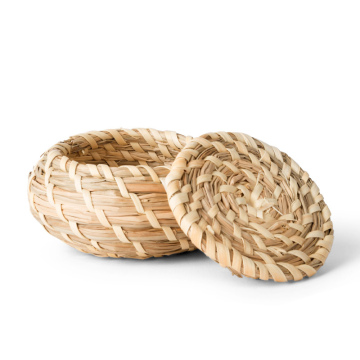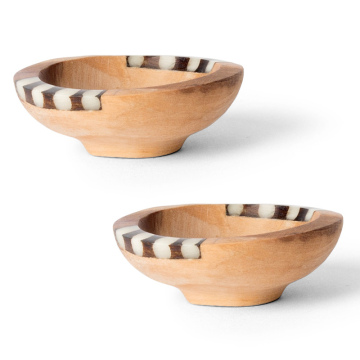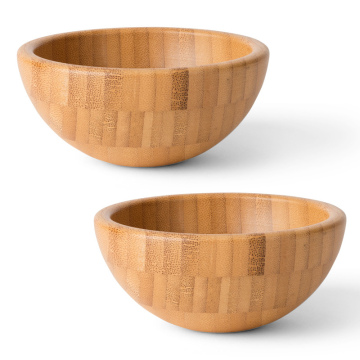Dipping into Flavor: Enjoying Japan’s Iconic Gyoza
The History and Origin of Gyoza
The origins of gyoza can be traced back to China, where a similar dish known as jiaozi has been consumed for thousands of years. Jiaozi is characterized by its dough envelope filled with a mixture of meat and vegetables and is commonly served during significant celebrations, such as the Lunar New Year. The dish was introduced to Japan in the early 20th century, specifically around the time of the Meiji era. As Japanese culinary culture began to absorb and adapt various foreign influences, jiaozi underwent a transformation, leading to the development of gyoza as it is recognized today.
After World War II, gyoza saw a remarkable surge in popularity in Japan. This was largely due to the American occupation that introduced various Western food practices and resources, encouraging a culture of experimentation in the kitchen. As a result, gyoza began to incorporate local ingredients and flavors, further cementing its place in Japanese cuisine. Particularly, gyoza became widely consumed as a street food and at izakayas, or Japanese pubs, making its way into homes as a staple dish enjoyed by families across the nation.
Regional variations of gyoza also began to emerge, reflecting the culinary diversity of Japan. For example, in Tokyo, gyoza is often pan-fried to create a crispy base, while in Osaka, a boiled or steamed version might prevail. The northern regions may favor dumplings with thicker skins and heartier fillings, whereas southern variants are often lighter and more delicately flavored. Today, gyoza remains not only a beloved dish but also a symbol of the cultural fusion between Japan and China, illustrating how food can evolve and adapt while preserving its essential spirit.
Types of Gyoza: Varieties and Fillings
Gyoza, a beloved staple of Japanese cuisine, comes in several varieties that cater to a range of palates. The most recognized types include pan-fried, steamed, and boiled gyoza, each offering a distinct texture and flavor profile. Pan-fried gyoza, known as 'yaki-gyoza,' is the most popular version. These are typically seared in a hot pan to create a crispy bottom while the upper portion remains tender, resulting in a delightful contrast of textures. In contrast, steamed gyoza, or 'mushi-gyoza,' preserves the moisture of the fillings, making them softer and juicier. Lastly, boiled gyoza, referred to as 'sui-gyoza,' is often enjoyed in a flavorful broth, enhancing their savory essence.
The fillings of gyoza vary significantly, with the most common ingredients including seasoned ground pork, cabbage, garlic, and ginger. Pork gyoza remains the classic choice, offering a rich and savory taste. However, gyoza is not limited to meat; a variety of vegetarian options are widely available, featuring ingredients like shiitake mushrooms, tofu, and an array of vegetables. These options cater to those who prefer plant-based meals without sacrificing flavor.
Regional specialties add to the diversity of gyoza across Japan. For instance, in the city of Utsunomiya, the local variant often comes stuffed with a unique blend of ingredients, featuring a higher vegetable content, reflecting the region's agricultural strengths. Similarly, contemporary eateries have embraced innovative flavors, creating gyoza filled with seafood, cheese, and even spicy sauces, appealing to adventurous diners. These variations not only showcase cultural influences but also highlight the adaptability of gyoza, making it a versatile dish for all occasions.
The Art of Enjoying Gyoza: Dipping Sauces and Accompaniments
Gyoza, the beloved Japanese dumpling, is celebrated not only for its delightful filling but also for the exquisite experience of eating it. The enjoyment of gyoza is significantly enhanced by the use of traditional dipping sauces that complement its rich flavors. The most common dipping sauce is a mixture of soy sauce and rice vinegar, which provides a perfect balance of umami and acidity. The addition of a few drops of chili oil can introduce a spicy kick, catering to those who prefer a bolder taste. The simplicity of these sauces allows the subtle flavors of the gyoza to shine through.
Beyond the essential dipping sauces, several accompaniments elevate the gyoza dining experience. Side dishes such as pickled vegetables, known as “tsukemono,” provide a refreshing contrast to the savory gyoza. Another popular accompaniment is a steaming bowl of miso soup, which complements the overall meal while adding warmth and comfort. A sprinkle of sesame seeds over the gyoza or a side of crisp salad further enhances the texture and flavors, making the meal more satisfying.
In an authentic setting, enjoying gyoza comes with its own etiquette. When dipping gyoza into sauce, it is customary to hold each dumpling by the edges gently, ensuring that the filling does not spill. It is advisable to take small bites to savor the flavors fully. Combining gyoza with a beverage such as green tea or light Japanese beer can improve the meal by cleansing the palate between bites. Offering three gyoza at a time on a shared plate is also common in traditional dining settings, promoting a communal and friendly atmosphere. By embracing these practices and pairings, one can truly appreciate the artistry involved in enjoying gyoza.
Making Gyoza at Home: A Step-by-Step Guide
Making gyoza at home can be a gratifying experience that allows you to enjoy this iconic Japanese dish fresh from your kitchen. To begin, gathered essential ingredients for both the dough and fillings. For the gyoza dough, you will need all-purpose flour, salt, and water. The filling typically consists of ground pork, chopped cabbage, garlic, ginger, green onions, soy sauce, and sesame oil. Feel free to adjust the ingredients according to your flavor preferences or dietary needs.
Once you have collected the necessary ingredients, start with the gyoza dough. Combine two cups of all-purpose flour with half a teaspoon of salt in a large bowl. Gradually add three-quarters of a cup of hot water while stirring continuously with a wooden spoon. When the mixture comes together, knead the dough on a floured surface for about five to seven minutes, until it's smooth and elastic. Cover it with a clean kitchen towel and let it rest for at least 30 minutes.
Next, prepare the filling. In a skillet, sauté the ground pork over medium heat until browned, followed by the garlic and ginger for an additional minute. Incorporate the chopped cabbage, green onions, soy sauce, and sesame oil, cooking everything together for about five minutes. Once the filling cools, it’s time to assemble the gyoza.
Divide the rested dough into small balls and roll each ball into a thin circle, approximately three inches in diameter. Place a spoonful of filling in the center of each circle. Carefully fold the dough over the filling and pinch the edges to seal, ensuring no air is trapped inside. For cooking, you can either pan-fry, steam, or boil the gyoza. For pan-frying, heat oil in a non-stick skillet, add the gyoza, and cook until the bottoms are golden brown. Then, add water and cover to steam them until cooked through.
With practice, you will achieve the perfect gyoza texture and flavor, making it easy to recreate this beloved dish at home.
Situs Gacor Pulsa Tri 5K Tanpa Potongan Terbaru 2025
Temukan situs gacor deposit pulsa Tri 5K tanpa potongan terbaru di tahun 2025 dan nikmati beragam permainan online dengan aman. Penting untuk memilih situs yang terpercaya agar pengalaman bermain Anda menyenangkan. Dapatkan kesempatan untuk meraih berbagai bonus dan promosi menarik serta pastikan semua transaksi diproses tanpa biaya tambahan. Bergabunglah dan nikmati permainan seru yang ditawarkan oleh situs gacor pulsa di tahun ini.
Situs Deposit Pulsa Tri 5K Tanpa Potongan Paling Gacor
Temukan kemudahan transaksi dengan situs deposit pulsa Tri 5k tanpa potongan. Nikmati proses deposit yang cepat dan efisien tanpa ada potongan, serta optimalkan setiap nilai deposit Anda. Dengan langkah-langkah yang sederhana, Anda bisa melakukan transaksi dengan mudah dan merasa lebih menguntungkan. Bergabunglah sekarang dan gunakan pulsa Anda secepatnya tanpa menunggu lama!
Cara Mudah Main Situs PG Soft Via Pulsa Tri dan Indosat 5000 Tanpa Potongan
Situs PG Soft kini semakin populer di kalangan penggemar permainan online. Dengan berbagai pilihan permainan yang menarik dan bonus yang menggiurkan, semakin banyak orang yang tertarik untuk mencoba keberuntungan mereka. Salah satu cara yang praktis untuk melakukan deposit adalah melalui pulsa, khususnya dengan provider Tri dan Indosat.
Keuntungan Menggunakan Pulsa untuk Deposit
Dengan menggunakan deposit pulsa Tri dan deposit pulsa Indosat, pemain bisa melakukan deposit mulai dari nominal 5000 tanpa potongan. Ini adalah pilihan yang sangat menguntungkan, terutama bagi mereka yang tidak memiliki rekening bank atau kartu kredit. Proses deposit pun sangat cepat dan mudah, sehingga Anda bisa langsung bermain tanpa harus menunggu lama.
Langkah-Langkah Melakukan Deposit
Untuk melakukan deposit di situs PG Soft via pulsa, langkahnya sangat sederhana. Pertama, pastikan Anda memiliki pulsa yang cukup. Kemudian, akses situs PG Soft dan lakukan pendaftaran jika Anda belum memiliki akun. Pilih opsi deposit via pulsa, masukkan nomor telepon, dan jumlah deposit yang diinginkan. Ikuti instruksi yang diberikan dan tunggu konfirmasi. Setelah selesai, saldo Anda akan segera terisi dan siap digunakan untuk bermain.











